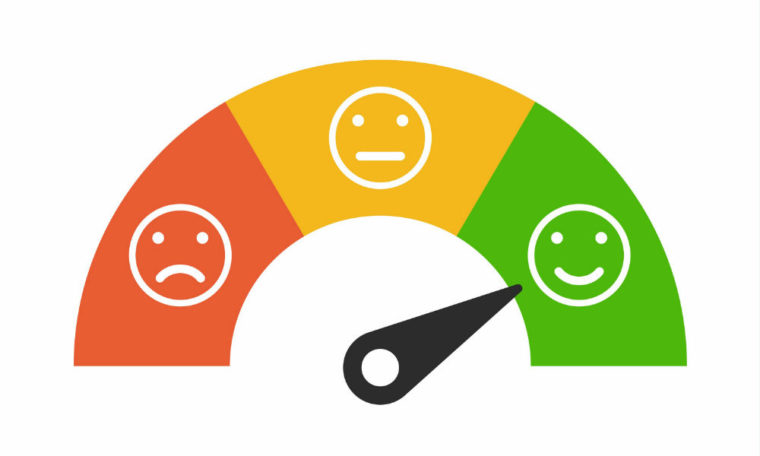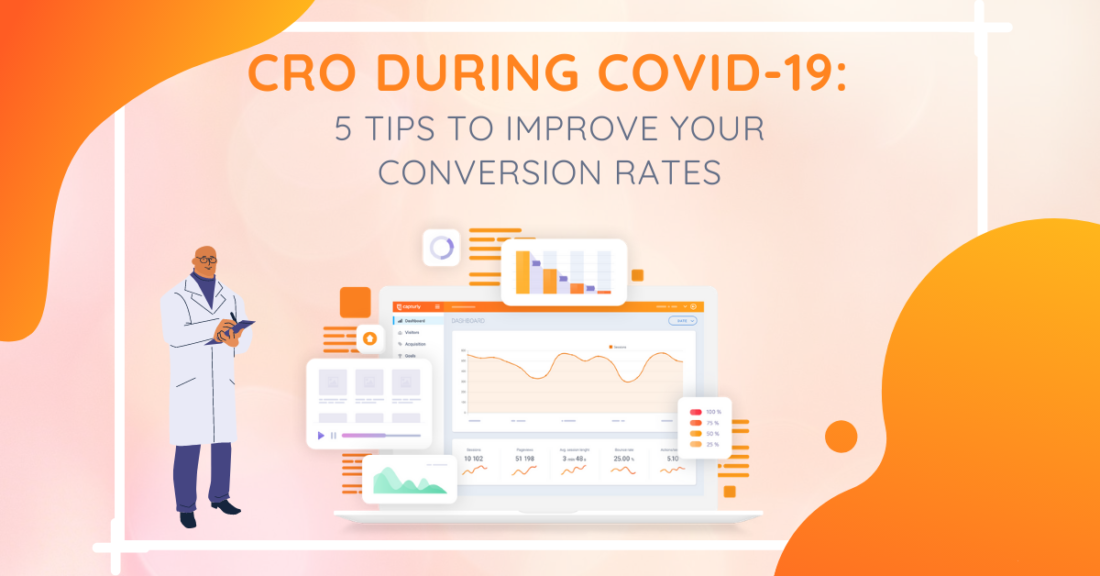COVID-19 has brought a sense of uncertainty with it. The world is changing, and so are the buying habits we have. Everything is moving online, becoming more digital (even more than it was), and that has also impacted how CRO works.
Customer expectations are changing. And this uncertainty is also present in the world of CRO. As CRO specialists, we have to adapt to the changes that are implied by COVID-19.
After all, how we respond during these times will determine how successful we will be after the end of the crisis.
In this article, we will take a look at how to use CRO during COVID-19. Also, how to increase your conversions during and after the pandemic.
Table of Contents
1, Understand Your Customers Through Research
For all of us, this time right now is uncharted territory. And we’re trying to explain and understand what goes in the minds of customers and potential buyers.
However, we can get a rough explanation with qualitative and quantitative measurement approaches. These can help you get a closer understanding of how to proceed with the marketing.

Focus on your conversion funnels. Has it changed during this time, and if yes, how? You might have to adapt your strategy to comply with these changes, especially if you want to keep up with competitors. The conversions should be made as simple and as smooth as possible.
Secondly, conduct research with on-site surveys
about the customers and how their behaviors have changed during COVID-19. There isn’t a better way of finding out more about the customers. But don’t be pushy about it – try to tell your customers that you’re trying to improve the experience.
Understand why users are shopping or using your service during this time will help you adapt to their needs; it will increase conversions, improve your marketing, and the whole on-site experience will be better.
2, Testing is the Key! But What Tests Should I Make?
We all know that A/B testing is at the heart of CRO, but it has become even more important than ever now. And that’s because we don’t exactly know what will happen next and how things will pan out – it’s very hard to tell at this stage.
But it’s crucial to do these tests as quickly as possible before it’s too late. You see, the marketing methods and buyer behaviors are changing almost daily, but nobody can predict how things will pan out.
And the most important thing to remember is that COVID-19 is a temporary thing, so you’ll need to find a way to revert things to normal at one point. These tests will help you tell you when exactly you need to do that.

Having tangible results from tests on your site will help you proceed with a new CRO strategy. Sometimes, it might require you to make some small, simple changes, which you can easily determine with A/B testing. But there is no need for the A/B tests to go through a series of teams in your company, including your CMS teams. You will want to test as quickly as possible if you haven’t already, with new solutions.
But what tests are the best to make at the moment?
-
Changing the Content on your Pages
It’s hard to know how exactly to relate to your customers right now. It’s better to play it slightly safer and focus on their feelings, but don’t push too much.
For example, use some soft copy that is not that aggressive. On the other hand, try an alternative copy with some bolder statements about your customers during COVID-19.
After a week or two, you should start seeing the results. If it has better outcomes, you can use it for the time of the pandemic and revert changes later on.
-
Testing CTA Button Positioning
Now, this test is not that difficult to make, especially because you can make this test without it going through various teams, especially the CMS team, which can take a while.
Maybe it’s better to place CTA buttons somewhere else or make them more visible, or larger. You can make this simple test and see how it works out for you.
-
Conversion Funnel Testing
Test out the entire conversion funnel, from copywriting to product pages, and your carts and payment systems.
3, Compare Data from Before
So now that you’ve collected some data with your testing, or even without it, you can start comparing it to the data before the pandemic to see how the marketing world is changing, and how the behaviors are changing.
Perhaps the users are using different approaches to access your website now. With the customers staying home more, they may use mobile devices more often, which is why you should probably adjust your website to mobile devices better if that’s the case.

Or, maybe customers are visiting some specific sites on your website more due to the pandemic. Shifting your focus to those pages could bear fruits.
One additional type of data to compare with the pre-pandemic data is heatmaps. If you are collecting website heatmaps still, you should compare them with how they were before COVID-19. Maybe the focus of the customers has shifted to a very specific part of the page, which is probably an indicator that you should make changes accordingly.
4, Optimize the Website
Online sales should probably be on the increase right now, and that’s due to the current situation in the world. If you’re seeing worse results than before, then you should analyze why that is, and make changes accordingly.
If you’re seeing a downfall in sales, or traffic, then you should reconsider your strategies. But first, you have to know exactly where the problem is.

If the problem is on your product pages or copywriting, then you can see that from bounce rates. Also, the problem could be the speed of the page. If the traffic has decreased, then it might be time to discuss that with your marketing team.
It’s important to not be idle but to stay proactive.
Another problem that may cause you to lose conversions is the checkout system or the cart system. Perhaps it’s too complicated. Now it’s more important than ever to have a good checkout system, and it should be very should and sweet. The customer should be able to purchase in a matter of minutes.
One of the biggest problems is probably having poor browsing speeds. If that’s the problem, then you need to analyze it immediately and try to remedy it as soon as possible.
5, Play it Gentle – Don’t Be Aggressive!
One of the most important things during this time is to adapt your marketing and on-site text to cater to the users’ emotions, but don’t overdo it! You don’t want to sound or appear like you are trying to monetize their hardships and take advantage of them during this time.
If they get a sense that you’re trying to take advantage of their hardship and their feelings, you might find yourself in a pickle. As soon as one detects your aggressive policies, you are more likely to lose clients and see a sharp decrease in your conversions.

Of course, you’ll want your customers to relate to you, but stay true to your brand and identity.
Don’t go out of your way just because of the pandemic.
The users are already stricken with fear and anxiety, so why would you want to make it worse?
You’ll want to stay transparent and trustworthy – it’s the only way to gain trust and new potential customers, but also to increase your conversions. And this trustworthiness should be apparent from your on-site marketing and text that you use to promote your content, services, business, or products.
Conclusion
Ultimately, how you will proceed with CRO during COVID-19 will vary from case to case. Some websites will struggle with traffic, some might see a decrease in sales, while others could see worse results when it comes to conversions.
Whatever the problem is, you should test as much as possible. Nobody can predict what will happen next, as the market is currently shrouded in a cloud of uncertainty. What works for one company might not work for you, so you should come up with your action plan.
Don't forget, sharing is caring! :)


1 Comment